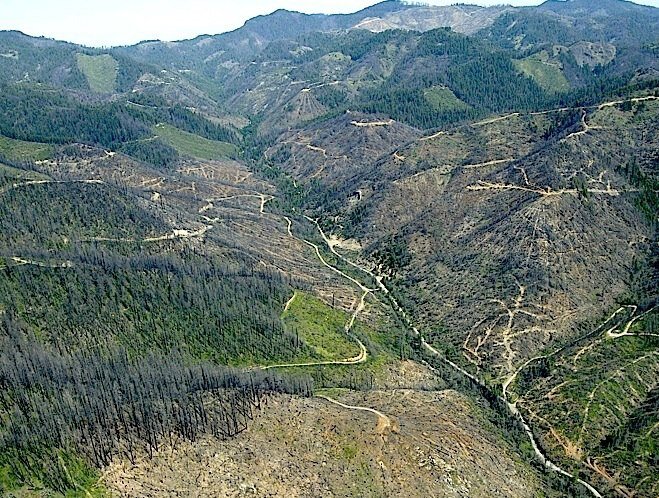Forest Conservation for Climate Change
Forests stabilize the climate.
They play a key role in the cycle of carbon in our atmosphere. We must take action to ensure that forests are a part of climate solutions.
Forests capture and store enough carbon to offset nearly 20% of pollution that causes climate change. Yet, forests are rarely made a part of climate policy. After we ensure the safety and security of workers, families, and communities still reeling from the pandemic, KS Wild will be advocating for federal policies that prioritize climate adaptation and restoration of forests. Our top five recommendations for leaders include:
1. Making forests central to state and federal climate change policy.
In Oregon, forest have been left out of state policies and only briefly addressed in a recent Executive Order. There is no accounting of the amount of carbon that forests store. Forest practices that increase or decrease carbon storage have not even been identified. In California, there are market incentivizes for forest conservation through carbon credits paid by polluters, but these measures have not significantly changed how forests are managed. We need to maximize forest resilience and carbon storage.
Recommendation: State and federal policies should be update to ensure that forest conservation and management maximizes carbon capture and storage. Policies should direct land managers to build resiliency in forests and stop practices like clearcutting and old growth logging that remove tons of carbon from our forests.
2. Updating the Northwest Forest Plan to prepare ecosystems for climate change.
Since 1994, the Northwest Forest Plan has guided management of 25 million acres of National Forest in the Pacific Northwest. This includes over eight million acres across five national forests in northern California and southern Oregon. The U.S. Forest Service is set to update this plan which will guide how our national forests are managed. These plans must become “climate smart” to store forest carbon and direct the U.S. Forest Service to prepare landscapes for climate change.
Recommendation: The Northwest Forest Plan should be updated to ensure that climate adaption strategies guide land management on national forests. These strategies include identifying the most vulnerable watersheds, recreation areas, and habitats, and then shaping land management projects to lessen the impacts of climate change and maximize carbon storage.
3. Reforming state forest management policies that are contributing to climate change.
About 40% of California and Oregon’s forests are owned by the timber industry and other state, tribal, and private landowners. The laws that govern these lands are outdated. Oregon has the weakest forest practices guidelines on the west coast. The Oregon Forest Practices Act (OFPA) allows rampant clearcutting, aerial herbicide spraying, and even logging right over stream sides. As a result, the timber industry is the leading contributor to carbon pollution in the state, polluting more that even the transportation sector (Oregon Global Warming Commission).
Recommendation: Update the OFPA to encourage carbon storage by lengthening the time between logging, limiting clearcutting, and protecting streamside forests.
4. Encouraging climate smart conservation on non-industrial private lands.
Many forests are managed in small blocks by tens of thousands of small woodland owners in Oregon and California. These landowners and residents often live on the forested property. Small woodland owners are some of the most responsible managers of their forests, but they are not equipped to understand and manage forests for carbon storage and climate adaptation.
Recommendation: Create a policy framework, incentives, and infrastructure to help small woodland owners manage their lands for carbon storage and climate adaptation.
5. Supporting carbon storage and climate adaptation in state and federal budgets
For many decades, our budget decisions have subsidized industries such as fossil fuels and the timber industry. The public has paid for tax breaks and incentives, indirect costs, and funded infrastructure for these industries. We need public money to go creating climate resiliency, including forest resilience, mitigating the impacts of climate induced wildfires, and funding projects that maximize forest carbon storage. If we are going to do the right thing, we will have to change where we put our tax dollars.
Recommendation: As we rebuild the post-COVID-19 economy, we must make financial investments through state and federal appropriations in projects that mitigate climate pollution and prepare our environment and communities for the threat of global climate change. We need public money to fund climate adaptation and community resiliency, which will help mitigate the impacts of climate induced wildfires. If we are going to do the right thing, it is time we change where we put our public investments.
Learn more about our Climate Program priorities:





